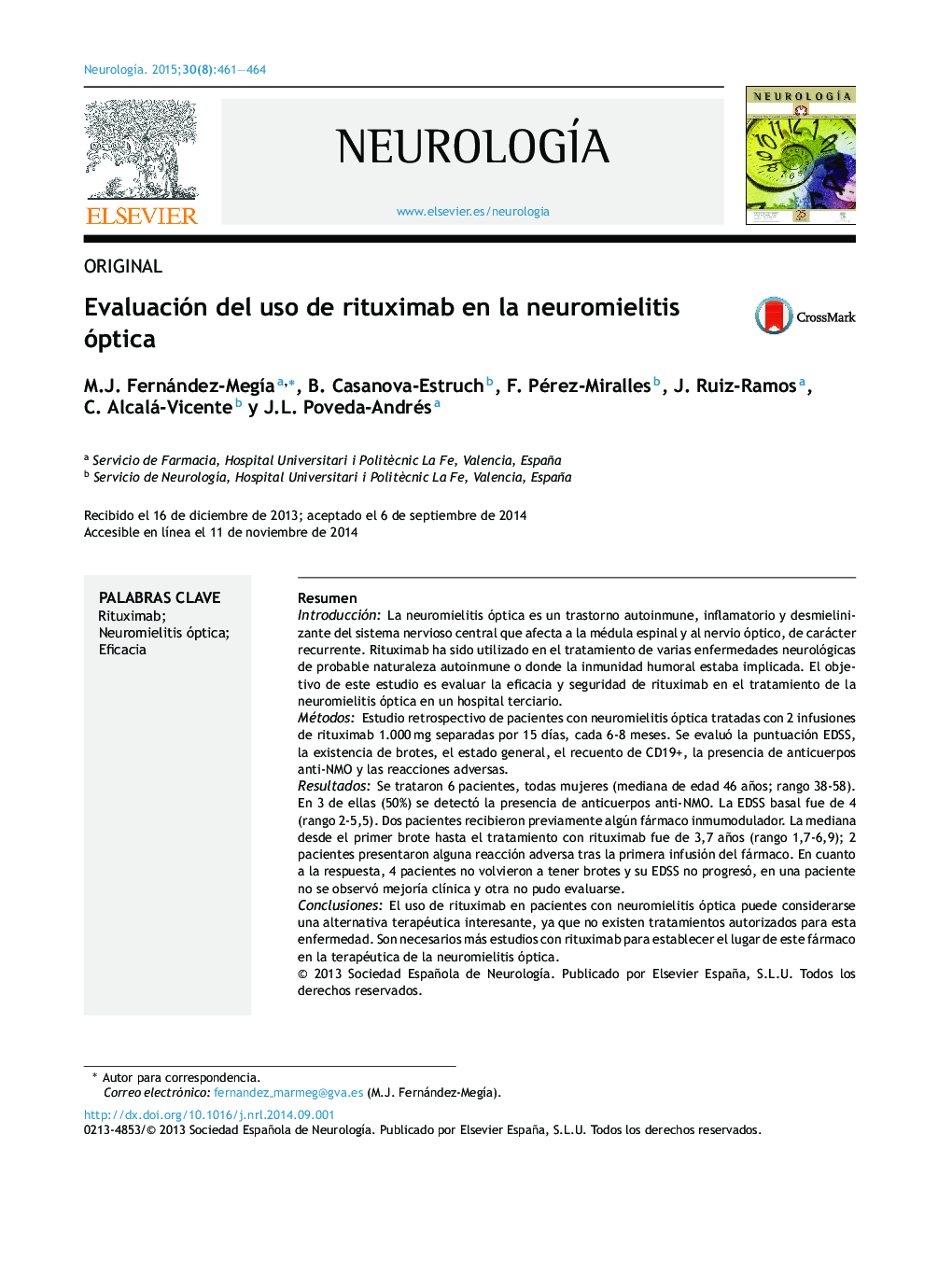| Article ID | Journal | Published Year | Pages | File Type |
|---|---|---|---|---|
| 3075745 | Neurología | 2015 | 4 Pages |
ResumenIntroducciónLa neuromielitis óptica es un trastorno autoinmune, inflamatorio y desmielinizante del sistema nervioso central que afecta a la médula espinal y al nervio óptico, de carácter recurrente. Rituximab ha sido utilizado en el tratamiento de varias enfermedades neurológicas de probable naturaleza autoinmune o donde la inmunidad humoral estaba implicada. El objetivo de este estudio es evaluar la eficacia y seguridad de rituximab en el tratamiento de la neuromielitis óptica en un hospital terciario.MétodosEstudio retrospectivo de pacientes con neuromielitis óptica tratadas con 2 infusiones de rituximab 1.000 mg separadas por 15 días, cada 6-8 meses. Se evaluó la puntuación EDSS, la existencia de brotes, el estado general, el recuento de CD19+, la presencia de anticuerpos anti-NMO y las reacciones adversas.ResultadosSe trataron 6 pacientes, todas mujeres (mediana de edad 46 años; rango 38-58). En 3 de ellas (50%) se detectó la presencia de anticuerpos anti-NMO. La EDSS basal fue de 4 (rango 2-5,5). Dos pacientes recibieron previamente algún fármaco inmumodulador. La mediana desde el primer brote hasta el tratamiento con rituximab fue de 3,7 años (rango 1,7-6,9); 2 pacientes presentaron alguna reacción adversa tras la primera infusión del fármaco. En cuanto a la respuesta, 4 pacientes no volvieron a tener brotes y su EDSS no progresó, en una paciente no se observó mejoría clínica y otra no pudo evaluarse.ConclusionesEl uso de rituximab en pacientes con neuromielitis óptica puede considerarse una alternativa terapéutica interesante, ya que no existen tratamientos autorizados para esta enfermedad. Son necesarios más estudios con rituximab para establecer el lugar de este fármaco en la terapéutica de la neuromielitis óptica.
IntroductionNeuromyelitis optica is an inflammatory and usually relapsing demyelinating autoimmune disease of the central nervous system that targets the optic nerves and spinal cord. Rituximab has been used for different neurological diseases that are probably immune-mediated or involving humoural immunity. The objective of this study is to evaluate the efficacy and safety of rituximab as treatment for neuromyelitis optica in a tertiary hospital.MethodsRetrospective study of patients with neuromyelitis optica treated with rituximab 1000 mg on days 1 and 15, repeated every 6 to 8 months. We recorded EDSS score, relapse rate, overall condition, CD19+ count, presence of anti-NMO antibodies, and possible adverse reactions.ResultsSix patients were treated; all were women with a median age of 46 years (range, 38-58). Anti-NMO antibodies were detected in 3 patients (50%). Baseline EDSS was 4 (range 2.0-5.5). Two patients had previously been treated with an immunomodulatory drug. Median time from the first rituximab infusion to first relapse was 3.7 years (range 1.7-6.9). Two patients had infusion reactions after the first dose of rituximab. Four patients remained relapse-free and their EDSS score did not progress during rituximab treatment, one patient showed no clinical improvement, and one patient could not be evaluated.ConclusionRituximab can be considered an attractive therapeutic alternative for patients with neuromyelitis optica as there are no approved treatments for this disease. Further studies with rituximab are needed to establish the role of this drug in treating neuromyelitis optica.
